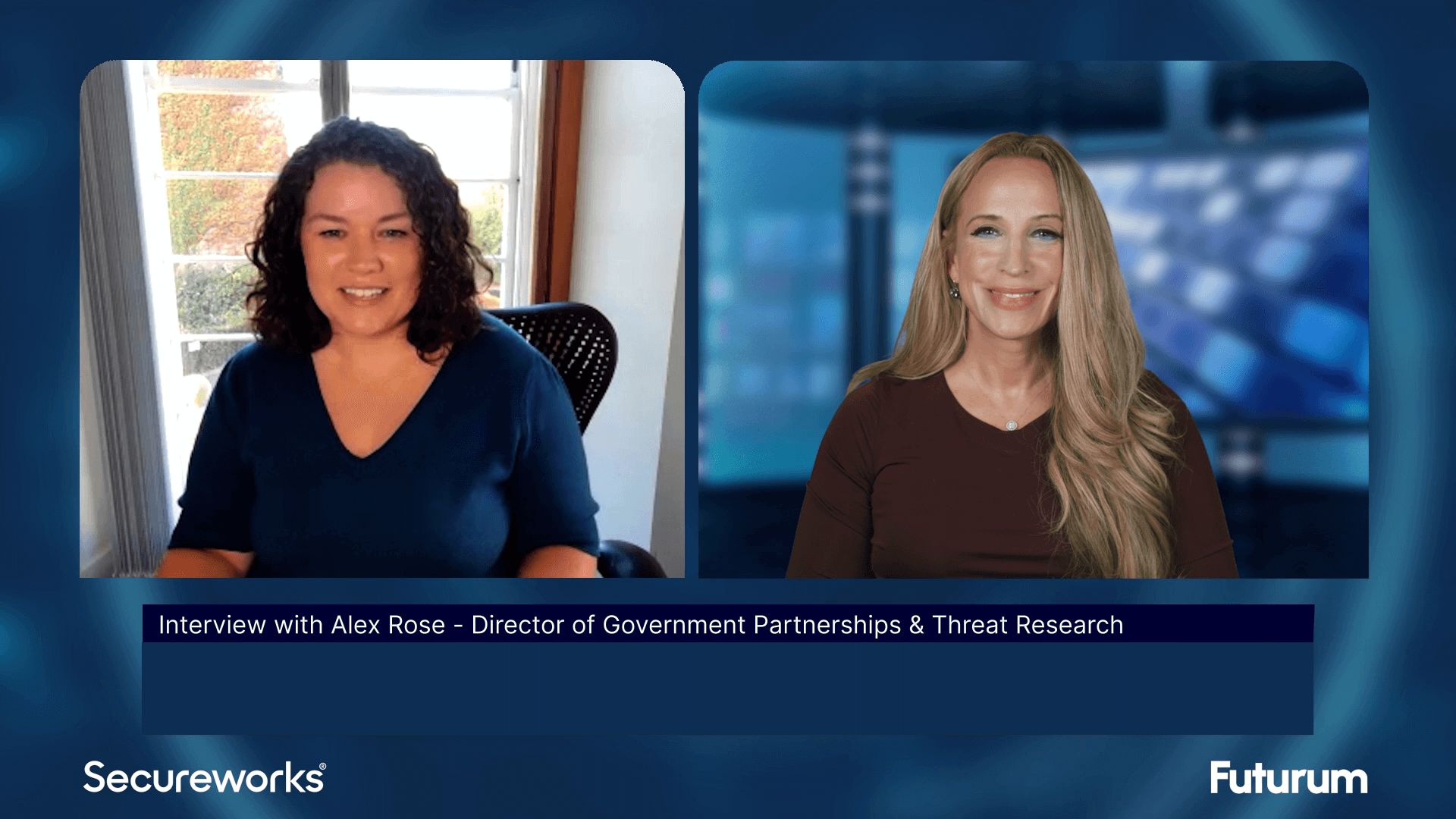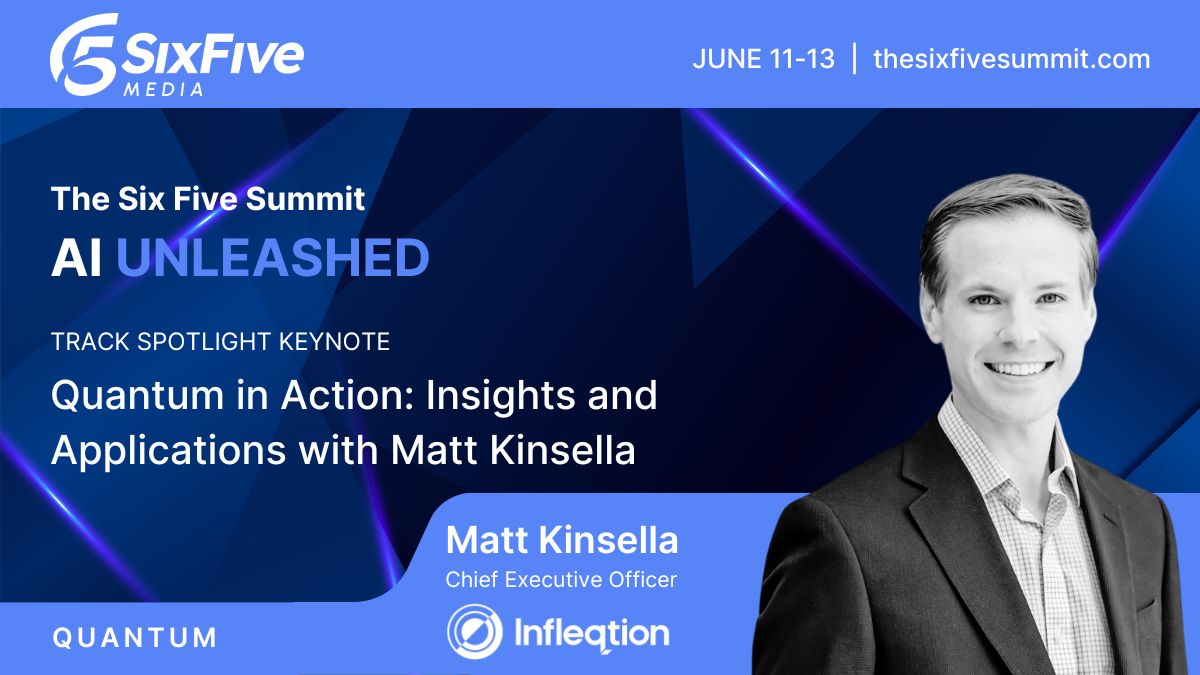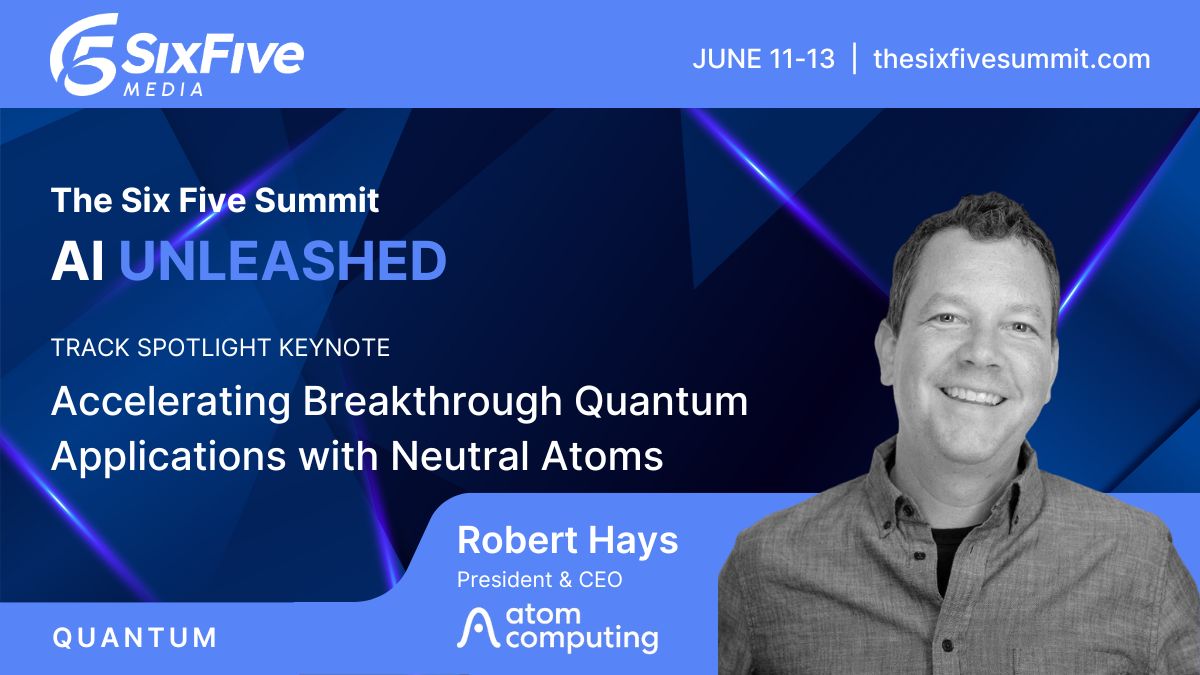HPE and Intel – Building Future-ready Compute Platforms Together
Krista Satterthwaite and Karin Eibschitz Segal join Patrick Moorhead to share insights on HPE's and Intel's collaboration in evolving compute platforms that are not just performant but future-ready.
Security breaches? Skyrocketing energy costs? Management headaches? These are just some of the challenges facing businesses today.
Learn how the new HPE ProLiant Gen12 server addresses some of these challenges.
Host Patrick Moorhead is joined by Krista Satterthwaite, SVP & GM, HPE Compute at HPE, and Karin Eibschitz Segal, CVP and Interim Leader of Intel’s Data Center and AI group at Intel, for a conversation on the recent launch of HPE’s Gen12 servers powered by Intel’s new Xeon Scalable processors, designed holistically to balance workload requirements for optimal power efficiency and security.
Key takeaways include:
🔹Collaboration: HPE and Intel have partnered to launch HPE’s Gen12 servers featuring Intel’s Xeon 6 processors, focusing on addressing modern computing challenges.
🔹Enhanced Security: HPE Gen12 servers introduce a secure enclave, quantum resistance, and meet FIPS 143 Level 3 requirements.
🔹Improved Efficiency: Intel Xeon Scalable processors offer a 40% performance boost and up to 10:1 rack consolidation, reducing TCO.
🔹Management Innovations: HPE Compute Ops Management provides AI-powered insights, map-based views, and energy and carbon threshold alerts.
Learn more at hpe.com/ProLiant.
Watch the video above, and be sure to subscribe to our YouTube channel, so you never miss an episode.
Patrick Moorhead:
The Six Five is back and we are doing a virtual on the road here, talking about one of my favorite topics. Listen, I always thought infrastructure was cool. I thought it was sexy. But it’s amazing how it’s really got a resurgence of discussion in this new age of Generative AI. And don’t be confused, it’s not all about Generative AI. Everybody’s doing just everything else. It’s one extra thing that enterprises have to deal with. And two of the leaders in this ecosystem are HPE and Intel. And we’re going to have a discussion today. It’s really a celebration, talking about how the two companies have recently come together with HP’s new platform, Intel’s new processor and solution. So I’d like to welcome both Krista and Karin. Welcome to the show.
Krista Satterthwaite:
Thanks. Great to be here.
Patrick Moorhead:
Usually celebrations are kind of in person. We’re having a party, but I am sure both of you are just partied out. You know, you took that 24 hours to smile, give kudos to the team and then you’re back on. Okay, how are we going to roll this out? How can we make this most effective and oh, by the way, multiple next generations in your roadmap. But I really appreciate you taking the time here. So let’s talk about what was announced, some specifics. Krista, we have written about and talked about your huge launch here at Moor Insights and Strategy. Why don’t we start off with you?
Krista Satterthwaite:
Okay, well, let’s talk a little bit about some of the challenges we’re seeing out there. We did this survey and we asked customers what their biggest challenges were. And it’s funny, when I saw the answers, it’s not like I was surprised, but what I will say is that I feel like these challenges are getting more challenging as we go. So we heard things like security is something keeping them up at night. And we both know that’s not getting easier. Hackers are getting more sophisticated, people are putting more things at the edge, which is even harder to secure. So as the edge grows, this problem grows. The other thing we heard was around efficiencies and people cannot afford to waste any time or money. What we’re seeing is that there’s a lot of old hardware out there that’s wasting a lot of space, a lot of power, and they’re just not getting the performance they deserve for the power and the space that they’re taking. Then the other one is when it comes to them being able to manage everything effectively. Managing your server operations is all about what you can see, when you can see it, and what you can do about it. So in this announcement we’re addressing all of those challenges. So we’re really excited about what we have and what we’re bringing to market.
Patrick Moorhead:
Yeah, I appreciate you moderating this, Krista. This is awesome. No, this is interesting. You know, and listen, everybody has to have a roadmap and they’re making bets two, three years out on the chip side. You’ve got to make your bets even earlier than that given some of the time frame. So yeah. Karin, do your customer challenges align with Krista’s?
Karin Eibschitz Segal:
First of all, we are thrilled with our long standing partnership with HPE and I’m really excited to support HPE in the launch of Gen12 servers based on Xeon 6. So, customers are looking for ways to effectively securely and efficiently modernize infrastructure to the demands of workloads like AI among others. So we know that a highly performant efficient compute is a must across the continuum, all the way from data center network and edge to the PC. To meet this growing need, we just launched our new Intel Xeon 6 with performance scores and Intel Xeon 6 SoC which delivers leading performance and efficiency for the broadest range of high performance data center network and AI workloads. So you asked me what customer challenges we are addressing, right? So with Intel Xeon 6 with performance calls, customers can reduce the total cost of ownership while still maintaining exceptional performance and efficiency. It supports up to 128 cores per socket with up to 504 megabyte L3 cache with exceptionally low latency and up to 12 memory channels for higher overall performance.
Patrick Moorhead:
No, I love it. And Krista, I want to give you a shot to talk about your big announcement too. That obviously has the latest new Intel Xeon 6’s.
Krista Satterthwaite:
When we announced ProLiant gen 10, we really took it up a notch when it came to security. We are taking it up another notch when it comes to security. We have a new ILO chip ILO 7 and with that we’ve been able to redesign it to be even more secure. So a couple things that we’re offering in our ProLiant Gen 12 family. First one is we have a secure enclave which is basically like an extra chip on ILO that’s more of a vault for encryption keys, other sensitive information. It’s tamper resistant. And that is one of the things that we feel like brings the security up another level. The other thing is we have built in quantum resistance. There’s a lot of news out there about some of the advances in quantum computing, quantum chips, you’re hearing from different vendors. When that happens, when quantum computing happens, the risk to security and the ability to break encryption increases. We’re building in protection now so customers can buy those servers now and have those in place so that when any other future threat occurs, they’re ready. The other one I’ll say is that when it comes to security, a lot of people look at the federal certifications and who’s meeting what certifications. We’re meeting the requirements of FIPS 140-3, Level 3. So we’re really excited about that. To be able to bring that level of security to our customers. Because even if you’re not a government agency, a lot of people look at those certifications as guideposts to what they buy.
Krista Satterthwaite:
So one of the things that we’re offering, and we’ve been offering for a couple of years is our HPE Compute Ops Management. It’s our cloud based management where you can manage and see servers wherever they are in the world. A lot of our customers that have a lot of compute at the edge really love this because they can see everything really, really easily. We’re taking that to the next level as well where we’re adding things like map based views so you can see in a quick picture where your servers are and the health status of those servers. We’re adding things like the ability to set thresholds if there’s an energy threshold that you want to be alerted to, if you get close to that level it will alert you. Same with carbon. So it’s alerting you to make sure that you know that you’re really getting close to those levels so you can take action when you need to.
Patrick Moorhead:
Yeah, it’s been, it’s been fun to watch how HP kind of ups the ante, adds value on the security side. We chronicle that a lot here at Moor Insights & Strategy and also on the management side of that. And you know, TCO is where it’s at, that’s really where it ends up. And once people, you know, realize how much money they’re spending on managing some of these systems and they look at the tools that are available to maybe automate this or just having thresholds where they get a heads up display that’s unified and they, and they know what to do is adding a lot of value and I’m glad you added those in there. You up the game here. You talked about carbon footprint and some of the tools that you made available. I want to ask Karin here, how are you balancing your solutions?
Karin Eibschitz Segal:
The Intel Xeon 6 with performance cores allows enterprises to do more in the same footprint with basically if we look at it, it’s an average of 40% higher Gen over Gen performance and up to 10 to 1 reconsolidation of 5 year old infrastructure. We are able to deliver these key improvements through deployment of our next Gen architecture together with our Intel 3 technology along with other technology innovations.
Patrick Moorhead:
Excellent. And Krista, you talked a little bit about some of the tools for carbon footprint but listen, you’re the one who delivers the platform. Are there any elements that you’ve changed or enhanced in Gen 12 related to that balance between performance and efficiency?
Krista Satterthwaite:
When I look at the advancements with this generation and I compare it to something we’re still shipping, not for very much longer but we’re still shipping our Gen 10 servers. There’s a 7 to 1 performance benefit. 7 to 1. And I don’t remember any time in our history where we were shipping two things at the same time that had that level of performance improvement and it doesn’t cost seven times more. Then when it comes to power, 65% power savings. So to get that level of performance improvements and save that much power, what I’m finding is that a lot of people just don’t realize how far things have come. So sometimes I’m talking to customers. There’s one customer that I talk to that has thousands of Gen9 servers and they’re trying to figure out how they’re going to get all the power they need to do AI. We’re so proud that our servers work for years and years and years and years. But a lot of times I just look and I say, just because you can run an old server doesn’t mean that you should run an old server. And I’m proud of that and I’m excited about it, but it’s not serving them the way that it should. And so we try to make sure people realize what they’re spending in terms of power and space. And also, I don’t know anybody that wants to do more when it comes to server management. If you can imagine if it’s a 7 to 1 ratio and you’re updating servers that you don’t need to update, you are doing more work than you actually need to do. We try to make sure that people realize how far things have come and how much this can benefit them if they’re trying to make space for new workloads like AI.
Patrick Moorhead:
Krista, I think we had discussed this before with your rollout and I think one of the most impactful slides, and by the way I’ve run this by some of your customers, potential customers, is that server consolidation slide. Right. And it’s one thing you read about it when you see what you can do and how you can fit more, compute in a much smaller, smaller space and consume less energy. And the thought of what you can do with that extra energy or what applications you run, I really think it starts to click. Yeah, so we’ve talked performance, density, manageability, security, power draws in there with density. What are some other areas of innovation that you’re looking into and investing in?
Karin Eibschitz Segal:
Sure, I’ll mention a few, but maybe I’ll start by touching upon one of the areas Krista mentioned earlier. Security. Right. This is an area where both Intel and HPE continue to drive innovation and provide the best capabilities to our customers. Security is critical and Intel Xeon 6 helps customers better protect platform data and code integrity with some hardware based security including application isolation. Now another area is our innovations with MRD and Xeon 6 which provides significant bandwidth advantage which is great for memory bound workloads.
Patrick Moorhead:
Krista, do you have any follow up on that? I know we’ve talked a lot already.
Krista Satterthwaite:
Yeah. So I’ll mention a couple things. First of all, our direct liquid cooling. So you know we have 50 years of experience in liquid cooling, which is kind of crazy when you think about what people were doing 50 years ago. I know I wasn’t working on that, but we’ve got that experience and we’ve leveraged that to really make a huge impact in high performance computing. Supercomputing. We have the top supercomputing servers in the world that leverage liquid cooling and what we’re doing is we’re bringing that functionality and that expertise that we have down to the ProLiant server family and we’re expanding things. So now all of our one socket and two socket rack servers support direct liquid cooling. Another thing I want to mention is ILO 7. I talked a lot about the security aspects of ILO 7, but a lot of customers love ILO and ILO now has a facelift, it has a new UI that’s a lot easier to navigate and it’s faster, much faster. You’ll notice the difference.
Patrick Moorhead:
I really enjoyed myself here. Hopefully everybody listening out there has as well. And Karin and Krista, tell me about some of the features and functionalities in the new Gen 12 portfolio. What are your impressions? I know you’ve got a lot of other customers out there, so you got to be spot on on this one.
Karin Eibschitz Segal:
Sure. I’m impressed with the level of innovation that HPE has brought with the Gen12 portfolio. And as Krista has mentioned, I think that HPE’s focus has really been on solving their customer challenges, features and functionality that are aligned to addressing security first and innovation with ILO. So really, myself and Intel, we are excited to be a partner with HPE helping deliver key technology that is aligned with solving our joint customers challenges.
Patrick Moorhead:
Excellent. I have to tell you, I feel like I can’t believe time goes so quickly here. Congratulations on both of your announcements. Great partnership that the two of you have had for decades. And thanks for coming on the show.
Krista Satterthwaite:
Thanks so much. Thanks for having us.
Patrick Moorhead:
Yeah, we’d love to have you again. This is Pat Moorhead signing off here for a virtual Six Five On The Road. You saw it here. The combination of Intel with its latest Xeon 6 with its added features and performance cores and of course HPE’s Gen 12. Check out all of the HPE and Intel content on the Six Five and on my website, MoorInsightsstrategy.com. Take care. Hit that subscribe button.
Other Categories
CYBERSECURITY

Threat Intelligence: Insights on Cybersecurity from Secureworks
Alex Rose from Secureworks joins Shira Rubinoff on the Cybersphere to share his insights on the critical role of threat intelligence in modern cybersecurity efforts, underscoring the importance of proactive, intelligence-driven defense mechanisms.
quantum

Quantum in Action: Insights and Applications with Matt Kinsella
Quantum is no longer a technology of the future; the quantum opportunity is here now. During this keynote conversation, Infleqtion CEO, Matt Kinsella will explore the latest quantum developments and how organizations can best leverage quantum to their advantage.

Accelerating Breakthrough Quantum Applications with Neutral Atoms
Our planet needs major breakthroughs for a more sustainable future and quantum computing promises to provide a path to new solutions in a variety of industry segments. This talk will explore what it takes for quantum computers to be able to solve these significant computational challenges, and will show that the timeline to addressing valuable applications may be sooner than previously thought.







